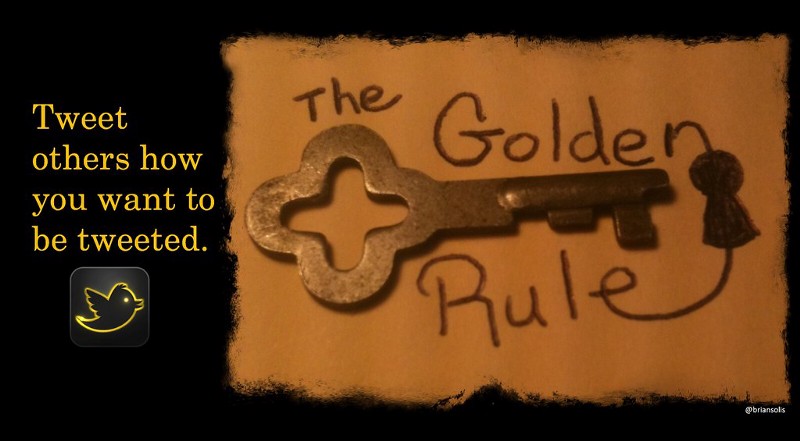While I’ve had a Twitter account far longer, I’ve been using Twitter pretty consistently for the last couple of years. I wanted to share what I’ve learned, and my personal philosophy on using it.
Understand Your Goals
Why are you on Twitter? What do you hope to achieve?
Are you looking to build community?
Are you looking to build an audience for your own views?
Are you looking to learn from others?
Your specific goals will dictate how Twitter can work for you. It can help with these things, but the specifics of how you use it matters.
Building An Audience
Your audience is your ability to influence the world around you.
An good idea is meaningless if it never has a chance to grow. A good idea implemented is a positive thing. A good idea spread to be re-implemented by others is better.
If you have a large engaged audience, then you have the ability to directly spread those good ideas when you encounter them.
The quick way to build an audience on Twitter is to already have an audience outside of Twitter, and then announce your Twitter account. Otherwise you’ll have some work to do.
Building Community
The way to build community is through effort. You want to make connections with individuals who share enough interest in your focus. To do this, you need to interact.
Send Tweets. You have views, you have experiences, you have value. Just share what you believe in or what matters to you.
 “Twitter’s Golden Rule by Brian Solis” by The Brian Solis is licensed under CC BY 2.0
“Twitter’s Golden Rule by Brian Solis” by The Brian Solis is licensed under CC BY 2.0
Like Tweets sent by others. The Like button, like the rest of Twitter, is free to use.
Respond to Tweets that you agree with. This encourages people to share.
Consider retweeting them, if you believe they’re worth sharing with your audience. If you’re sharing things in line with the values of your followers, then you are providing them with value.
Question Tweets you don’t agree with, in a positive manner. This demonstrates your values, and provides you with an opportunity to learn what you are missing or to share what others are missing with them.
Following and Followers
The more people you follow, the more people will follow you. Not everyone follow back, but many people will. The quality of the people you follow as well as the quality of those who follow you back will depend on the quality of your selections.
When selecting who to follow, try to keep in mind what behaviors you want to see in them.
Are you looking for people to retweet what you share? Pick someone who retweets content then, especially content you agree with. When you see a Tweet getting passed around, look at the list of accounts that retweeted the post and follow them. Similarly follow people who like or respond to content.
You can blindly follow people regardless of their views and activities, but you’ll find that the usefulness of your timeline will suffer, and you’re less likely to get much benefit.
Twitter does additionally impose following limits, which means that an aggressive following strategy would need to also involve pruning of accounts who do not follow you back, in order to avoid being stuck unable to follow any additional accounts.
A guide for understanding Twitter
There are multiple apps available for managing who you are following. When you find that you’re unable to follow additional people, you can pull up a list of people who do not follow you back, and you can decide who from that list may be removed.
Some apps additionally allow you to white-list certain accounts so that you don’t accidentally unfollow them when you prune people who aren’t following back.
Expect to learn first hand about Twitter’s limits on how many people you can follow. You will need to adjust your behavior to meet their requirements.
Maintaining Your Followers
What do you want to see out of your community? If your followers are harassing people, then those people will not want to interact with you. I regularly block followers for being abusive with others. If a follower is making it harder to achieve your goals, then they are not worth having.
Consider talking to the person before blocking them. Depending on how it is done and the personality of the individual, you may have some success.
I try to have frank conversations about politics. Building a rapport with someone who is distrustful of people who share your views takes effort that can destroyed by any abusive follower who decides to jump in.
Why isn’t it working?
Well, what are you sharing? What are you saying? How effectively are you making the argument? Could you be missing something? Have you tried listening more? Have you tried explaining differently?
We are all missing things, and we are often overconfident of own views. This can both make it harder to get people to listen to good ideas, as well as making it harder to distinguish a good idea from a bad one.
It is far easier to gain an audience by saying what people want to hear than it is to build one through new complex ideas. The most meaningful change may take the most effort to build a following for.